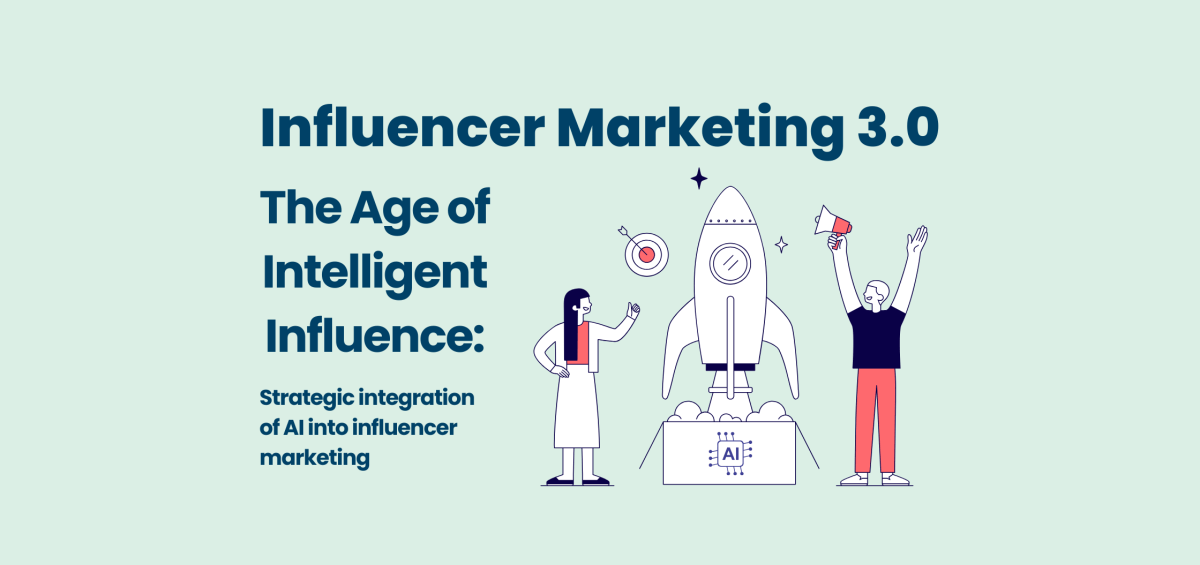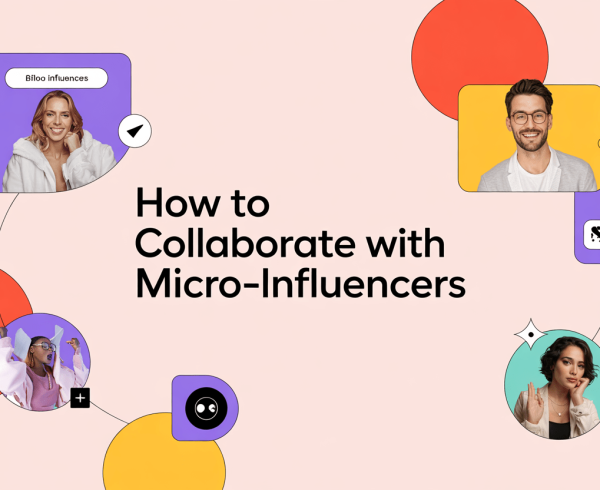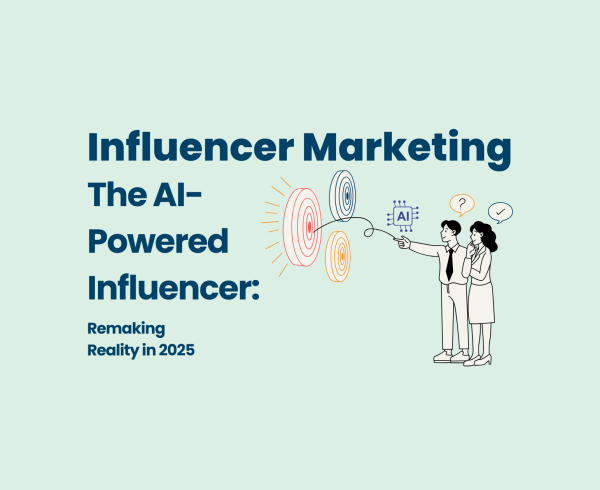The influencer marketing landscape is in a state of constant flux. What began as a nascent trend has rapidly evolved into a multi-billion-dollar industry, projected to reach $32 billion by 2027. This exponential growth has prompted a significant shift away from traditional marketing strategies, with businesses increasingly recognising the immense potential of Influencer Marketing Agency partnerships to drive impactful digital campaigns.
As we move towards the 2nd quarter of 2025, the influencer marketing paradigm is undergoing another transformation. We’re moving beyond the transactional nature of early influencer marketing and even the relationship-focused “Influence 2.0” to a new era: Influence 3.0. This phase is characterised by the infusion of Artificial Intelligence (AI) to enhance authenticity and scale meaningful engagement.
From Transactional to Transformational
In its initial stages, influencer marketing was often transactional. Brands sought influencers with large followings to promote products or services, with the primary goal of driving immediate sales. However, this approach often lacked genuine connection and failed to build lasting relationships between brands, influencers, and audiences.
“Influence 2.0” marked a shift towards relationship-building. There was a growing recognition that long-term partnerships with influencers, built on trust and mutual respect, yielded better results. Authenticity became a key buzzword, with brands seeking influencers whose values aligned with their own.
The Dawn of Influence 3.0: The Age of Intelligent Influence
Influence 3.0 is defined by the strategic integration of AI into influencer marketing to achieve authentic engagement at scale. This new phase is not about replacing human connection but about augmenting it. AI tools are now being used to:
Enhance Influencer Identification: AI algorithms analyse vast amounts of data to identify influencers who are the best fit for a brand, considering factors such as audience demographics, content style, and brand values. One of the example of this tools is StarScout.ai. This ensures that brands partner with influencers who can genuinely connect with their target audience.
Personalise Content Creation: AI assists influencers in crafting more personalised and engaging content. This includes generating captions, suggesting relevant hashtags, and even providing feedback on video edits.
Optimise Campaign Management: AI-powered platforms automate many of the time-consuming tasks associated with influencer marketing, such as tracking campaign performance, measuring ROI, and managing influencer communication.
Detect Influencer Fraud: AI plays a crucial role in identifying and mitigating influencer fraud, such as fake followers and bot activity. This helps brands ensure that their investment is yielding genuine results.
Key Characteristics of Influence 3.0
Influence 3.0 is characterised by several key trends:
AI-Powered Authenticity: While AI plays a significant role in optimising influencer marketing, authenticity remains paramount. AI tools are used to enhance, not replace, genuine influencer-audience connections.
Hyper-Personalisation at Scale: AI enables brands to deliver highly personalised experiences to their target audience through influencer content. This level of personalization was previously difficult to achieve at scale.
Data-Driven Decision Making: AI provides marketers with access to vast amounts of data and analytics, enabling them to make more informed decisions about their influencer marketing strategies.
The Rise of Virtual Influencers: AI has facilitated the emergence of virtual influencers, computer-generated avatars with realistic personalities and engaged followings. These virtual influencers offer brands a high degree of control and the ability to craft unique narratives.
Focus on Micro and Nano-Influencers: While macro-influencers still play a role, there’s a growing emphasis on micro and nano-influencers who often have higher engagement rates and more authentic connections with their audiences.
Short-Form Video Dominance: Platforms like Instagram, YouTube, TikTok and RedNote (Xiaohongshu), with their emphasis on short-form video content, continue to be a dominant force in influencer marketing. AI tools are used to optimise the creation and distribution of this type of content.
Challenges and Considerations
While Influence 3.0 offers immense potential, it also presents new challenges:
Maintaining Authenticity: As AI plays a larger role, brands and influencers must work diligently to ensure that content remains authentic and genuine.
Ethical Considerations: The use of AI in influencer marketing raises ethical questions, particularly around transparency, disclosure, and the potential for manipulation.
Data Privacy: The collection and use of data to personalise influencer marketing campaigns must be handled responsibly and ethically, respecting user privacy.
Evolving Regulations: As the influencer marketing landscape continues to evolve, regulations are likely to follow. Brands and influencers must stay abreast of these changes to ensure compliance.
The Future of Influence
Influence 3.0 is not the final destination but rather a stepping stone in the ongoing evolution of influencer marketing. The future will likely see:
Increased Integration of AI: AI will become even more deeply integrated into all aspects of influencer marketing, from influencer discovery to campaign measurement.
The Metaverse and Web3: Influencer marketing will expand into new virtual environments, such as the metaverse, and leverage Web3 technologies like blockchain.
Greater Emphasis on Community: Brands will focus on building and nurturing communities around their brand, with influencers playing a key role in facilitating these interactions.
Personalisation and Customisation: AI will enable even greater personalisation of influencer content, tailoring it to the specific interests and preferences of individual consumers.
Conclusion
Influence 3.0: The Age of Intelligent Influence represents a significant leap forward in the evolution of influencer marketing. By strategically leveraging AI to enhance authenticity, personalise experiences, and optimise campaigns, brands can forge deeper connections with their target audiences and achieve unprecedented results.
For brands ready to lead in this space, partnering with an Influencer Marketing Agency in Singapore isn’t just a smart move—it’s a strategic imperative. Agencies that understand the nuances of AI, short-form content trends, and emerging platforms like RedNote are best equipped to help brands navigate this next frontier with confidence.






